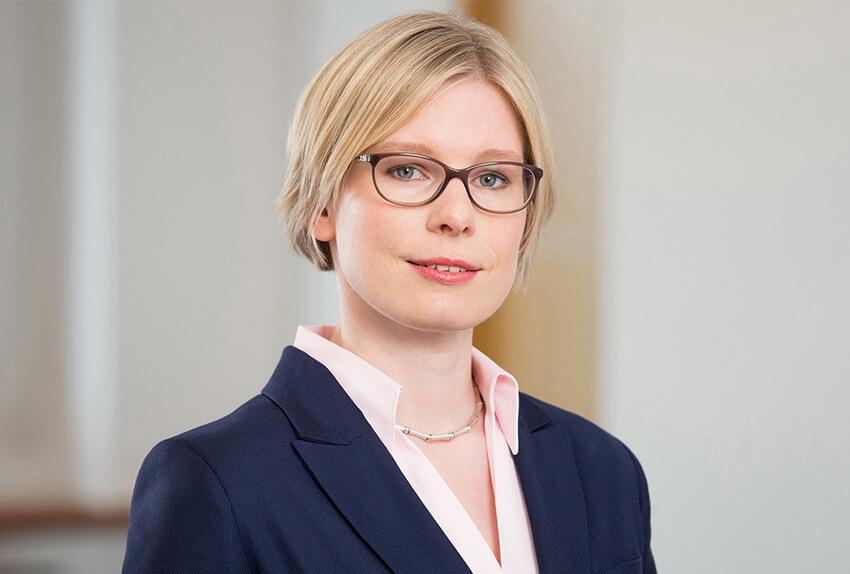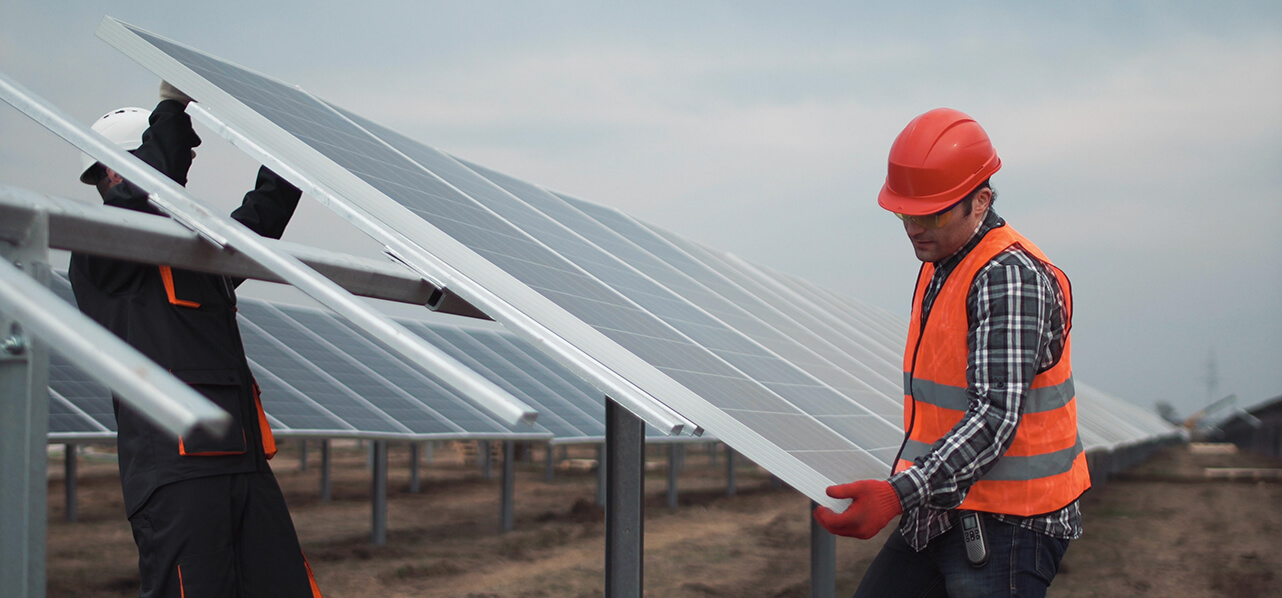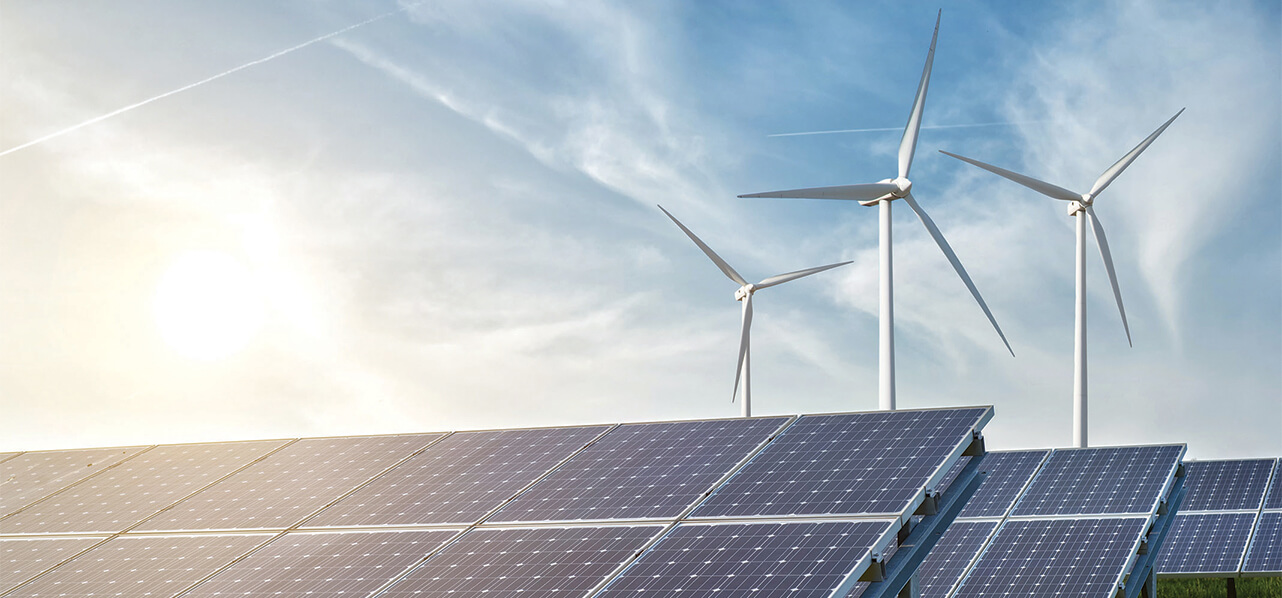Partner Hamburg
"The amended WindSeeG aims to help secure this expansion – thereby giving industry players long-term predictability – and support climate and environmental protection."
The legislative process to amend the German Renewable Energy Sources Act (Erneuerbare-Energien-Gesetz – “EEG”), which should come into force on 1 January 2021, is ongoing. This article will focus on the amended WindSeeG, while the changes associated with the amended EEG, especially for other sources of renewable energy, will be examined in a separate article once the legislative procedure has been completed.
Overview
The German government’s Climate Protection Programme 2030 seeks to increase the target for offshore wind energy from 15 to 20 GW by 2030. The amended WindSeeG aims to help secure this expansion – thereby giving industry players long-term predictability – and support climate and environmental protection.
In view of the protracted planning and approval periods for offshore wind energy developments (including corresponding offshore grid connections), the legislative intent of the new amendment is to establish a legal framework as early as possible by amending the WindSeeG and other relevant rules. For maritime spatial planning (maritime Raumordnung – “MRO”), scenarios for the construction of further offshore wind turbines after 2030 are currently being discussed. Thus, the law for the first time provides for a long-term target of 40 GW of offshore wind energy by the year 2040. This long-term goal is based on an assessment of demand and is considered ambitious, but possible from a technical and spatial planning perspective.
Implementation of the increased expansion target
The so-called Offshore Agreement (Offshore-Vereinbarung) between the federal government, the coastal states of the Free Hanseatic City of Bremen, the Free and Hanseatic City of Hamburg, Mecklenburg-Western Pomerania, Lower Saxony and Schleswig-Holstein and the transmission system operators 50Hertz, Amprion and TenneT (11 May 2020) expressly states that the targeted, efficient and increasingly market-oriented expansion of renewable energy, harmonised with grid expansion, is a decisive factor in achieving climate targets. Offshore wind is central to the renewables mix because of good site conditions offshore, continuous power generation and decreased technology costs, as well as being generally well-received locally. The Offshore Agreement considers that the site development plan (Flächenentwicklungsplan – “FEP”) must be updated accordingly by the end of 2020 to account for the implementation of the 20 GW target by 2030.
For this purpose, the revised section 5 para. 5 of the WindSeeG provides that the FEP shall set out the areas (Gebiete) and the sites (Flächen) as well as the order in which said sites are tendered and turbines constructed in such a way that by the annual bidding date (1 September) these can be put out to tender with an expected installed capacity of approximately 1 GW per year for the years 2021-2023, approx. 3 GW in 2024 and approx. 4 GW in 2025. Deviations from these interim targets are permissible, provided the increased expansion target for 2030 is reached. The stipulations in the FEP ensure that from 2016, more sites are put out to tender to enable a steady increase in capacity. The time period between tender and commissioning must be long enough so that the construction deadlines according to section 59 of the WindSeeG (as amended, please see below) can be met.
The abolition of a fixed annual target under the amended WindSeeG allows for more flexibility in the expansion process. According to the current draft of the FEP, the largest “topping-up-tender” (“Aufstockungsausschreibung”) will take place in 2025. Prior to this invitation to tender, the Federal Maritime and Hydrographic Agency (Bundesamt für Seeschifffahrt und Hydrographie – “BSH”) will need sufficient time for necessary preliminary investigations of the sites to be put out to tender.
The current draft of the FEP 2020 provides for the following expansion steps:
"The abolition of a fixed annual target under the amended WindSeeG allows for more flexibility in the expansion process."
| Tender | Commissioning | Site | Grid Connection | Power to be installed | Total power to be installed |
|---|---|---|---|---|---|
| 2021 | 2026 | N-3.7 N-3.8 O-1.3 | NOR-3-3 NOR-3-3 OST-1-4 | 225 MW 433 MW 300 MW | 958 MW |
| 2022 | 2027 | N-7.2 | NOR-7.2 | 930 MW | 930 MW |
| 2023 | 2028 | N-3.5 N-3.6 | NOR-3-2 NOR-3-2 | 420 MW 480 MW | 900 MW |
| 2024 | 2029 | N-6.6 N-6.7 N-9.1 N-9.2 | NOR-6-3 NOR-6-3 NOR-9-1 NOR-9-1 | 630 MW 270 MW 1,000 MW 1,000 MW | 2,900 MW |
| 2025 | 2030 | N-9.3 N-9.4 N-10.1 N-10.2 | NOR-9-2 NOR-9-2 NOR-10-1 NOR-10-1 | 1,000 MW 1,000 MW 1,000 MW 1,000 MW | 4,000 MW |
Source: BSH, Entwurf Flächenentwicklungsplan 2020 für die deutsche Nord- und Ostsee, 4 September 2020, p. 149.
In order to achieve the increased expansion target for offshore wind energy and to better coordinate with grid expansion, the new WindSeeG provides in particular for a pre-tender review of the expected completion of the relevant grid connection by the Federal Network Agency (Bundesnetzagentur – “BNetzA”), a tightening of the time frame for the construction of offshore wind turbines and changes in the tendering procedure by increasing the maximum bid value and in the case of “zero-cent” offers, all of which are explained below.
CHANGES TO THE TENDERING SYSTEM
Pre-tender review of the expected completion of the grid connection by BNetzA
The timely completion of necessary infrastructure is central to transmit the electricity generated by an offshore wind installation. To try and synchronise these processes, the revised WindSeeG introduces an additional assessment step: before announcing the invitation to tender for a site, the BNetzA checks whether the grid capacity required for electricity feed-in, transmission and distribution is expected to be constructed and completed in time.
"If any of these conditions are met, the site in question cannot be put out to tender in the relevant year."
Specifically, the BNetzA examines:
- whether a transmission system operator with an obligation to connect has not published the estimated date of completion of their offshore connection; and
- whether there is an opinion from the responsible transmission system operator that the shore-side connection will not be operational by the expected completion date of the offshore connection and that no suitable alternatives are feasible.
If any of these conditions are met, the site in question cannot be put out to tender in the relevant year. In case the BNetzA’s assessment shows that the grid connection will not be available in time, the tendering of the relevant site will have to be postponed until the synchronisation of electricity generation and grid connection can be ensured. The site can be put out to tender in the following year if any problems are solved. If necessary, a corresponding adjustment must be made in the FEP.
The purpose of this assessment is to minimise the risk that an offshore wind farm cannot be put into operation due to a lack of grid capacity and that the plant operator has to be compensated for delayed grid connection at the expense of electricity customers.
Tighter time frame for construction
In order to achieve the 20 GW target by 2030 and to maximise possible generation capacity, adjustments were made by tightening construction deadlines and the FEP specifications. In particular, the amended section 59 of the WindSeeG truncates some of the development milestone deadlines:
- Start of construction: six instead of three months before the binding grid connection date;
- Operational readiness of at least one wind turbine: by the binding grid connection date instead of six months after; and
- Operational readiness of all wind energy installations: six instead of 18 months after the binding grid connection date.
We note that the deadline for the proof of financing remains unchanged at the original 24 months prior to the binding grid connection date. In the case of insolvency of the WTG supplier, the deadlines for the start of construction and operational readiness can by extended by up to 18 months. Under the new section 60 para. 2 no. 2 WindSeeG, the penalty for failure to meet the deadline for proof of financing is changed to 100% (instead of 30%) of the bid bond to be deposited with the BNetzA.
"Instead of the second bidding component model or a CfD model, the law now provides for a lottery procedure."
Increase of the maximum bid value
In the first tender rounds for existing projects, zero-cent bids were submitted for the first time in 2017 and 2018 – i.e. the relevant bidder did not claim any funding. Under the previous version of the WindSeeG, the maximum value in future tenders had to correspond to the lowest bid value which received an award in the bidding round of 1 April 2018. In view of this, only zero-cent bids could have been submitted in future tender rounds. Due to the relatively strong competitive situation in the offshore wind sector, it is to be expected that bidders will again submit zero-cent bids in future tender rounds. However, not every offshore project is economically feasible without additional funding, particularly when the differences in the sites put out to tender are taken into account.
"For the 2021 tendering round, the maximum bid value is 7.3 eurocents/kWh, which will then be successively reduced for the subsequent tendering rounds."
In light of this, the maximum bidding value has been increased under the new WindSeeG. The maximum value was determined based on economic calculations taking into account the technology costs and the relevant sites’ characteristics. For the 2021 tendering round, the maximum bid value is 7.3 eurocents/kWh, which will then be successively reduced for the subsequent tendering rounds to 6.4 eurocents/kWh for 2022 and to 6.2 eurocents/kWh from 2023 onwards (section 22 para. 1 WindSeeG).
Changes in case of zero-cent bids
The draft law initially provided for a second bidding component for the next tender round in autumn 2021. However, during the legislative process this was rejected for the time being. The second bidding component was intended to enable zero-cent bidders to express their willingness to pay in a second bidding process. The bidder’s willingness to pay would have determined the amount of an offshore connection fee to be paid to the transmission system operator.
In recent months, the offshore sector, including a broad alliance of industry, finance and science, has been working to replace the second bid component model envisaged in the draft legislation with a symmetrical market premium model which corresponds to the Contracts for Difference (“CfD”) model known in other European states. In contrast to the dynamic bidding procedure with a second bid component, the symmetrical market premium model would only require the operator to pay revenues achieved in excess of the award value, said payments reducing the EEG levy or the offshore grid charge. In contrast, if the electricity price falls below the award value determined in the tender, the successful bidder would not be obliged to make payments. Instead, the successful bidder would (as before) receive a remuneration for the difference between the market price and the award value.
Instead of the second bidding component model or a CfD model, the law now provides for a lottery procedure: in the event of several zero-cent bids, the winning bid will be determined by lot. In 2022, the German government will examine whether there is a need for further adjustments. In addition, the government is to monitor the tendering models for offshore wind farms in other EU member states in order to be able to identify any possible need for adjustment (§23a WindSeeG). Accordingly, while the CfD model has not yet been established, it might still be introduced in the future.
"BSH will on request reimburse a project owner whose planning approval or permitting procedure has been terminated because of the introduction of the central system."
Modification or reissue of permits
The new section 63a of the WindSeeG clarifies that subsequent amendments and reissues of planning approval or permits do not affect the award in the tender proceedings. Said modifications or reissues affect neither the validity nor the scope of the award.
Reimbursement of planning costs
The new section 10a of the WindSeeG provides that owners of projects that had to be discontinued under the old regime may be entitled to a reimbursement of the necessary costs for investigations/surveys. According to this provision, the BSH will on request reimburse a project owner whose planning approval or permitting procedure has been terminated because of the introduction of the central system or whose permit already granted under the Offshore Installations Ordinance (Seeanlagenverordnung) has lost its effect through the entry into force of the WindSeeG for the costs of investigations/surveys, provided that certain conditions are met. The application for the reimbursement of costs can be submitted to the BSH until 30 June 2021.
The conditions for reimbursement include:
- the project was planned in one of the clusters 9 to 13 of the BSH’s Federal Offshore Plan for the German Exclusive Economic Zone of the North Sea 2013/2014;
- investigations were necessary for the planning approval or licensing of the project; and
- the results and documents from the investigations can be used for the preliminary investigation of a site which is scheduled in the FEP for tendering before 31 December 2030, which requires in particular that:
a) at the time of the preliminary investigation required for an invitation to tender, said investigations are covered by section 10 para. 1 sentence 1 of the WindSeeG (investigations of the marine environment, preliminary exploration of the subsoil and reports on the wind and oceanographic conditions of the site concerned); and
b) correspond to state of the art of science and technology.
This new rule was introduced following a decision of the Federal Constitutional Court (“BVerfG”) of 20 August 2020 relating to several constitutional complaints. In said decision, the BVerfG considered the initial version of the WindSeeG and, in particular, the “central model” it introduced, to be largely in line with the constitution. The “central model” describes the state planning and preliminary investigation of sites for offshore wind turbines and the tendering of such sites, which is intended to ensure a synchronous development of wind turbines and grid connections at sea, the use of all available sites for offshore wind energy in the exclusive economic zone and in the territorial sea in the most efficient manner, as well as intensive competition in the tenders.
"The most controversial point in the legislative process was the second bid component originally envisaged by the Federal government in the case of more than one zero-cent offer."
However, the BVerfG decided that the WindSeeG was unconstitutional in that project developers who had lost projects in clusters 9 to 13 due to the changeover to the central model, without being granted a step-in right, must be entitled to financial compensation for costs incurred for planning and preliminary studies under certain conditions. Due to the relatively subordinate importance of this rule, however, the BVerfG held that the WindSeeG could continue to apply until the legal basis for compensation payments was established, which the legislator had to create by 30 June 2021.
With the new WindSeeG, the decision of the BVerfG has now already been legislatively implemented and a corresponding rule on the reimbursement of costs for investigations has been created.
Other energy production
According to section 5 para. 2a of the WindSeeG, the FEP can define “Other Energy Production Areas” as defined in section 3 no. 8 WindSeeG (outside of wind farm areas) with a total size of 25 to 70 square kilometres. In said Other Energy Production Areas, offshore wind turbines and other energy production plants which are not connected to the grid can be constructed, subject to the approval procedure. Section 3 No. 7 of the WindSeeG states that other energy generation plants are plants for the generation of electricity at sea from renewable energy sources other than wind or for the production of other energy sources or other forms of energy. Thus the production of hydrogen in particular is covered. According to the draft of the FEP 2020, p. 126, this concerns areas which are too small for a grid connection. The draft FEP 2020 provides for one Other Energy Generation Area in the North Sea and one in the Baltic Sea. The plan provides for a cable route to land only in respect of the Baltic sea site. This would not be a grid connection by the transmission system operator, as Other Energy Production Areas are specifically defined as areas without a grid connection. Rather, said cable would have to be constructed and operated by the operator of the production unit if he wants such cable, e.g. for connection to an onshore electrolyser. No such cable route is envisaged for the other energy production area in the North Sea.
Within the Other Energy Production Areas in Germany’s exclusive economic zone as defined in the FEP, the BSH will run tender proceedings to determine which operator may apply for a permit for the site. After winning an award, applications for plan approval for the Other Energy Production Area to which the plan refers can be submitted. In the case of offshore wind turbines which are not connected to the grid and other energy generation plants, the plan may only be approved if the applicant has obtained an award for the relevant site. The details of the tendering procedure, in particular with regard to the award criteria, are not contained in the revised WindSeeG, but will be set out in a separate regulation at a later stage.
"With the expansion target for 2030 raised to 20 GW and the new 40 GW target for 2040, offshore wind energy can make an important contribution to achieving Germany’s climate targets and also serves as a catalyst for energy system transformation."
APPLICABILITY/TRANSITIONAL PROVISIONS
The revised WindSeeG contains new transitional provisions with regard to certain changes, particularly in relation to changes in construction deadlines and penalties for non-compliance with said deadlines. The new transitional provisions in section 59 para. 2 sentence 2 and section 60 para. 3 sentence 3 of the WindSeeG stipulate that the revised deadlines in section 59 and section 60 do not apply to projects which have obtained an award in the tendering procedures for existing projects. In this case, the earlier iteration of WindSeeG shall continue to apply.
OUTLOOK
After a protracted period of discussions, the amended WindSeeG has crystallised a long-term perspective for the expansion of offshore wind energy. With the expansion target for 2030 raised to 20 GW and the new 40 GW target for 2040, offshore wind energy can make an important contribution to achieving Germany’s climate targets and also serves as a catalyst for energy system transformation.
However, the new WindSeeG does not yet set out the necessary framework for the production of “green” hydrogen from offshore wind power and therefore does not yet set the course for implementing the German government’s energy and climate policy goal of achieving an electrolysis capacity of 5 GW by 2030 and another 5 GW by 2040 at the latest. In addition, the amendment of the WindSeeG also does not contain the short-term special tendering procedures that the Federal government announced in its coalition agreement, in order to implement the increased expansion targets by the additional allocation of sites for the construction of new offshore wind farms.
Regarding the tender design, so-called zero-cent offers are still possible. The most controversial point in the legislative process was the second bid component originally envisaged by the Federal government in the case of more than one zero-cent offer. However, following insistent objections (mainly from the offshore wind industry), this has not been introduced for the time being. As a result, until a new regulation is adopted, the lottery will decide when there is more than one zero-cent bid, i.e. at least in the 2021 bidding round. It remains to be seen if and what changes will be made after the evaluation of the lottery system, especially if a CfD model might be introduced at a later stage, said models already being used in several European countries.
Key contacts
Partner Hamburg
Partner Hamburg





